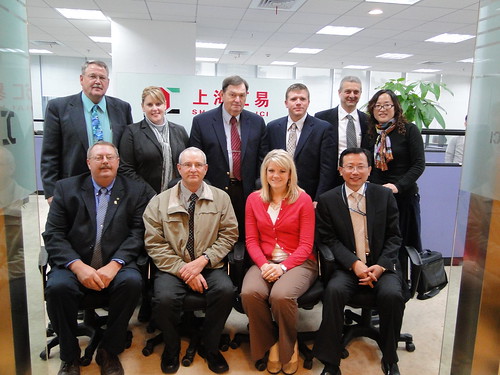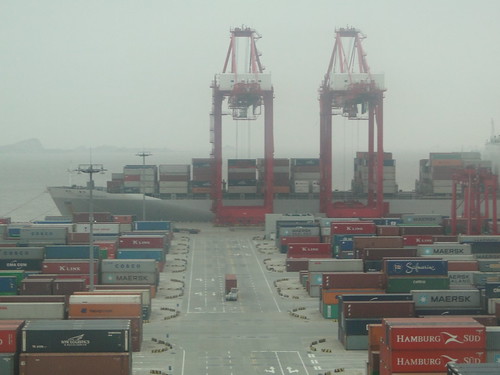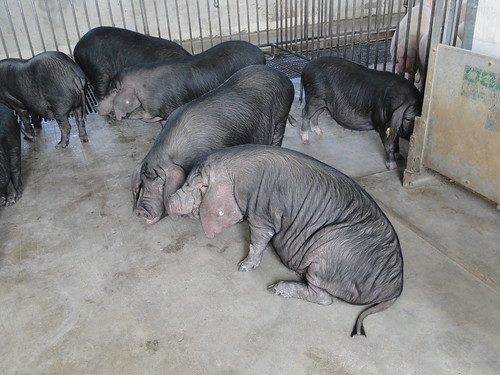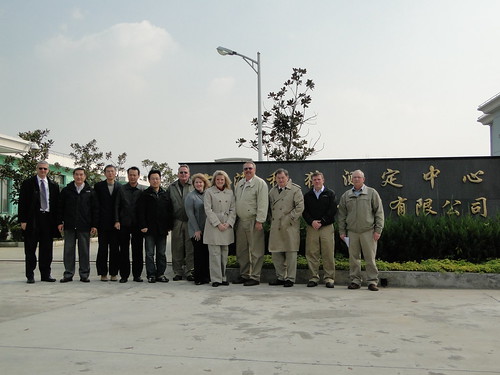 Seeing first-hand the situation in China was a highlight for the U.S. Grains Council 2010 Corn Mission delegation. The recent imports of U.S. corn into China’s uncertain market caused many to speculate about the future of imports of corn and meeting demand worldwide.
Seeing first-hand the situation in China was a highlight for the U.S. Grains Council 2010 Corn Mission delegation. The recent imports of U.S. corn into China’s uncertain market caused many to speculate about the future of imports of corn and meeting demand worldwide.China’s economy, the second largest in the world, has been growing 8-10% for the last 35 years. China imports $27 billion in agricultural trade, $13.1 of that are exports from the U.S.
Unfortunately China’s policy issues have left the world wondering if, when, and who they will import from in the future. However, industry officials and associations that the 2010 Corn Mission delegation met with were positive about the future of a relationship between the U.S. and China in ag exports.
 In an informative meeting with Shanghai JC Intelligence Co., one of the leading grain, feed and livestock consulting firms in China, shared that they suspect China will import a large amount of corn next year. China imported around 1.5 million metric tons (mmt) this past year, with the help of efforts of companies like JCI and their partnership with the U.S. Grains Council. 7-8 mmt imported into China could be possible in the near future.
In an informative meeting with Shanghai JC Intelligence Co., one of the leading grain, feed and livestock consulting firms in China, shared that they suspect China will import a large amount of corn next year. China imported around 1.5 million metric tons (mmt) this past year, with the help of efforts of companies like JCI and their partnership with the U.S. Grains Council. 7-8 mmt imported into China could be possible in the near future.Last year, Chinese corn production was around 153 mmt, with domestic demand around 150 mmt, so China decided to import corn to increase their stock levels for carryover. JCI predicted that this next year’s production will be around 154 mmt, with domestic consumption at 155 mmt, surpassing production. As many have been wondering, JCI agreed that policy adjustments by the Chinese government will have to be made to have a constant flow of imports of U.S. corn. These policy standard issues were brought up recently when China did not accept a shipment of U.S. corn at the port.
 China imported about 1.3 mmt of dried distillers grains (DDGS) last year, so including the 1.5 mmt of corn imported, China has imported roughly 3 mmt of corn and corn co-products total from the U.S., which played a crucial role in setting domestic price. Many of the feed companies that the delegation met with are increasing their DDGS use in their livestock feed rations. They stated they would continue to import, dependent on price. DDGS is easily imported into China, yet it is a feed ingredient that requires a “per plant registration” which is difficult to deal with at the port.
China imported about 1.3 mmt of dried distillers grains (DDGS) last year, so including the 1.5 mmt of corn imported, China has imported roughly 3 mmt of corn and corn co-products total from the U.S., which played a crucial role in setting domestic price. Many of the feed companies that the delegation met with are increasing their DDGS use in their livestock feed rations. They stated they would continue to import, dependent on price. DDGS is easily imported into China, yet it is a feed ingredient that requires a “per plant registration” which is difficult to deal with at the port. One concern that some of the industry officials worried about was a trend of decreased acres going into corn in the U.S. Larry Klever, (@KleverCorn) Corn Mission delegate from the Iowa Corn Promotion Board and farmer from Audubon, Iowa, assured them that U.S. farmers will continue to plant corn if they remain profitable and know there is a demand for it – like exporting it to China.“If China’s imports translate to profits, we will find more acres to plant more corn,” said Klever.
While in China, the delegation also met with Shanghai Puyao Trading Co., Shanghai Animal Husbandry Service Disease Prevention Center, Bunge Shanghai, Guangdong Haid Group, Guangdong Jun Jie Co., as well as visiting the Shanghai container sea port, a dairy farm, and hog research farm. A common theme from the meetings was that China and the U.S. need to work together in ag policy issues to provide enough food and feed. Many of the industry leaders agreed that there is “more than enough room for both of us in the ag market”.
A recap of the 2010 Corn Mission to Japan, Taiwan and China will follow in an upcoming blog post. You can check out updated photos in our online album here.


No comments:
Post a Comment